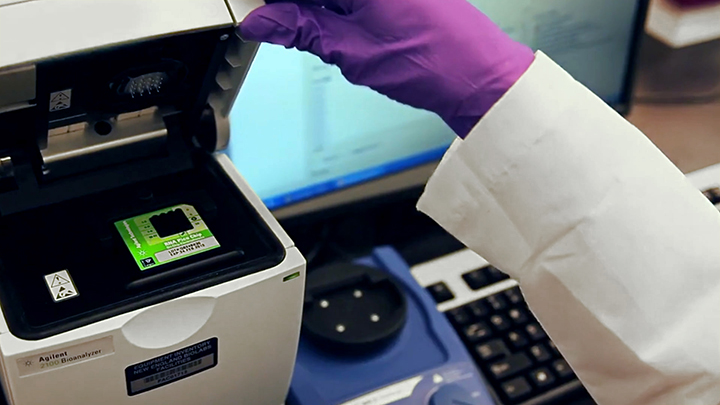Library prep for NGS
Script
In order to sequence a sample using next-generation sequencing, you need to make a library. That library consists of fragments of the DNA you are interested in, attached to short adapters at each end required for downstream sequencing process.
For library prep for Illumina, the first step is to fragment the DNA, repair the ends by filling in, or chewing back overhangs, and phosphorylate the five prime ends. DA-Tailing then adds an A to the three prime ends of the blunted fragments, and adapters with a T overhang are then ligated. The final step is PCR amplification, which increases the amount of library, and enriches four fragments that have an adapter ligated to both ends.
To produce high-quality sequence data, you need a high-quality library that has equal representation of every part of the original DNA, without any bias. A high-quality library will result in sequence data with uniform GC coverage, a low percentage of duplicate reads and chimeras, and a high percentage of reads that map to the reference sequence with no dropouts.
Related Videos
-

12 Quick Tips for NGS Library Preparation -

Tips for Optimizing DNA Inputs in NGS Library Construction -

Tips for Optimizing RNA Inputs in NGS Library Construction

